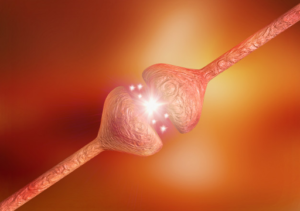The benefits of exercise for people with Parkinson’s disease
11th May 2020
Parkinson’s disease is the second most common neurodegenerative disease after Alzheimer’s, affecting more than 10 million people. Although exercise may not be a cure for Parkinson’s disease, it can be one of the most powerful treatments. Exercise can help individuals manage symptoms and side effects as well as being effective in slowing down the progression of the disease.
Exercise for preventing and slowing disease progression
While research shows exercise can slow down the progression of Parkinson’s disease, the biological and molecular reasons for this remains a bit of a mystery.

Dopamine is a neurotransmitter responsible for controlling and coordinating movements. Individuals with Parkinson’s experience a loss of nerve cells in the brain responsible for producing dopamine. When the amount of dopamine released in the brain is reduced, movements can become slow and abnormal. Research on mice has suggested that exercise does not affect the amount of dopamine produced but can modify areas of the brain where dopamine signals are received, meaning dopamine will be used more efficiently potentially reducing the progression of Parkinson’s disease. Physical activity has also been associated with changes in neurotransmitter levels, growth of neuronal processes and neurogenesis. This means exercise could stimulate the growth and development of new cells as well as resulting in improved memory and cognitive function. Moreover, work by scientists at the University of Colorado have suggested exercise may turn on a protective gene, DJ-1 preventing abnormal protein accumulation in the brain therefore slowing the progression of Parkinson’s disease.
While much remains to be learnt about the mechanisms linking exercise and Parkinson’s progression, we know that exercise is a safe and affordable way of managing Parkinson’s symptoms that could even delay disease progression.
Exercise in managing symptoms
- Improves muscular strength and prevents functional decline
- Reduces stiffness and improves mobility
- Improves posture
- Improves balance and gait
- Increases oxygen delivery to keep heart, lungs and nervous system healthy
- Reduces depression, stress and anxiety
- Prevents social isolation
- Slows down the progression of Parkinson’s
- Reduces motor symptoms
- Improves ability to manage daily life
What exercise is best?
Parkinson’s affects everyone differently meaning there is no ideal solution. Exercise recommendations include:
- Take part in aerobic exercise that supports functional movements e.g. walking.
- Take part in high intensity exercise such as circuit or HIIT training.
- Perform muscle strengthening exercises involving functional, meaningful movements.
- Practice exercises to improve balance, coordination and posture.
- Have regular ‘exercise snacks’ to stay active throughout the day.
- Perform exercises that involve mental tasks, charging direction and complex challenges.
- Perform exercises that involve repetitional movements and sequences.
- Perform exercises to improve power to promote initiation of movement.
Get in touch to find out more about exercise for Parkinson’s
References
Frazzitta, G., Balbi, P., Maestri, R., Bertotti, G., Boveri, N., & Pezzoli, G. (2013). The beneficial role of intensive exercise on Parkinson disease progression. American journal of physical medicine & rehabilitation.
Lai, J. H., Chen, K. Y., Wu, J. C. C., Olson, L., Brené, S., Huang, C. Z., … & Hsieh, T. H. (2019). Voluntary exercise delays progressive deterioration of markers of metabolism and behavior in a mouse model of Parkinson’s disease. Brain research.
Segura‐Aguilar, J., Paris, I., Muñoz, P., Ferrari, E., Zecca, L., & Zucca, F. A. (2014). Protective and toxic roles of dopamine in Parkinson’s disease. Journal of Neurochemistry.
Sullivan, A. M., & Toulouse, A. (2011). Neurotrophic factors for the treatment of Parkinson’s disease. Cytokine & growth factor reviews.
Vučcković, M. G., Li, Q., Fisher, B., Nacca, A., Leahy, R. M., Walsh, J. P., … & Petzinger, G. M. (2010). Exercise elevates dopamine D2 receptor in a mouse model of Parkinson’s disease: in vivo imaging with fallypride. Movement Disorders.
Zhou, W., Barkow, J. C., & Freed, C. R. (2017). Running wheel exercise reduces α-synuclein aggregation and improves motor and cognitive function in a transgenic mouse model of Parkinson’s disease. PloS one.
